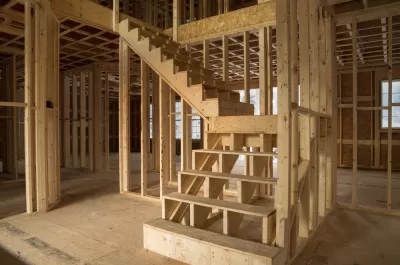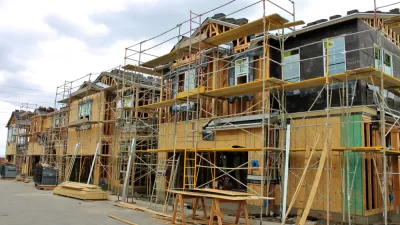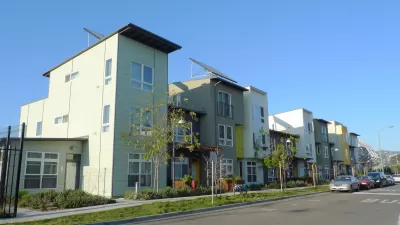It's too early to gauge the long-term effects of California's housing package signed a year ago. But with a $4 billion bond on the ballot this November, some facts (and some dramas) have already made themselves known.

Last September, California Governor Jerry Brown signed into law a raft of bills meant to address the state's housing woes. They included SB 2, SB 3, and the controversial SB 35. Here, Matt Levin checks in on some results of that legislation, acknowledging that the bulk of related construction has yet to occur.
In terms of raw numbers, Levin writes, "After a recent uptick, the state is on pace to greenlight more than 130,000 new housing units this year. That's still 50,000 short of where experts say we need to be to keep prices from getting worse, and way less than what either candidate for governor says we need."
In addition, more localities are reporting their housing data to the state: upwards of 70 percent, according to Ben Metcalf of California's Housing and Community Development Department. "The housing package put some teeth, at last, into those requirements. Cities and counties that fail to provide accurate and timely housing data now face myriad penalties, including the loss of control over local housing approvals."
One of the bills, SB 2, placed a big-dollar bond measure on this year's ballot. "Lawmakers placed a $4 billion bond on the ballot this fall, $3 billion of which will go toward the financing of below-market-rate housing and other forms of housing assistance for low-income Californians (the other $1 billion will go towards home loans for veterans). Californians will have a chance to vote on Prop. 1 in November."
Finally, Levin discusses SB 35 and its usage in Cupertino to push through a large development despite opposition and reticence from local elected officials.
FULL STORY: The state passed a major housing package last year. Is it working so far?

Study: Maui’s Plan to Convert Vacation Rentals to Long-Term Housing Could Cause Nearly $1 Billion Economic Loss
The plan would reduce visitor accommodation by 25,% resulting in 1,900 jobs lost.

Alabama: Trump Terminates Settlements for Black Communities Harmed By Raw Sewage
Trump deemed the landmark civil rights agreement “illegal DEI and environmental justice policy.”

Why Should We Subsidize Public Transportation?
Many public transit agencies face financial stress due to rising costs, declining fare revenue, and declining subsidies. Transit advocates must provide a strong business case for increasing public transit funding.

Paris Bike Boom Leads to Steep Drop in Air Pollution
The French city’s air quality has improved dramatically in the past 20 years, coinciding with a growth in cycling.

Why Housing Costs More to Build in California Than in Texas
Hard costs like labor and materials combined with ‘soft’ costs such as permitting make building in the San Francisco Bay Area almost three times as costly as in Texas cities.

San Diego County Sees a Rise in Urban Coyotes
San Diego County experiences a rise in urban coyotes, as sightings become prevalent throughout its urban neighbourhoods and surrounding areas.
Urban Design for Planners 1: Software Tools
This six-course series explores essential urban design concepts using open source software and equips planners with the tools they need to participate fully in the urban design process.
Planning for Universal Design
Learn the tools for implementing Universal Design in planning regulations.
Smith Gee Studio
Alamo Area Metropolitan Planning Organization
City of Santa Clarita
Institute for Housing and Urban Development Studies (IHS)
City of Grandview
Harvard GSD Executive Education
Toledo-Lucas County Plan Commissions
Salt Lake City
NYU Wagner Graduate School of Public Service





























